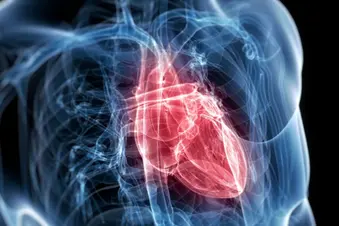
About 1 in 4 people worldwide have some type of anemia. Iron-deficiency anemia, the most common form by far, makes up about half of all cases. Women and very young children get it the most. In fact, about 1 in 10 women of childbearing age, and nearly that many kids aged 1 to 3, have this condition.
Iron-deficiency anemia is treatable. You can bring your iron back up with iron-rich foods, supplements, or medicine, depending on the cause and your doctor’s recommendations. But leaving it untreated can lead to a number of complications -- and even death. Here are eight problems iron-deficiency anemia can cause.
Fatigue. Just as the name implies, iron-deficiency anemia happens when your iron is too low. Iron helps make hemoglobin, a substance in red blood cells that allows them to carry oxygen all over your body. When you don’t have enough iron, you won’t have enough hemoglobin to do this important work. If oxygen can’t get to the rest of your body, you may feel tired and short of breath as a result.
Headaches. Anemia lowers the amount of oxygen that reaches your brain. This can cause arteries in the area to swell, which leads to headaches. Iron-deficiency anemia may also trigger migraines in women. This could be because iron helps keep levels of brain chemicals such as serotonin, dopamine, and norepinephrine stable. When iron is low, these hormones can fluctuate and trigger a migraine headache.
Heart problems. Untreated anemia can cause a rapid or irregular heartbeat. It also puts a lot of stress on your heart. Anemia lowers your red blood cell count. When you don’t have enough red blood cells, your heart has to pump a lot more blood to make sure that enough oxygen gets to all your organs. That extra work can hurt your heart and lead to an enlarged heart or heart failure.
Restless legs syndrome. A small number of people with restless legs syndrome also have a condition that causes iron deficiency, like anemia. Doctors aren’t sure what the link is, but one theory is that low levels of iron decrease levels of dopamine, a brain chemical that helps control muscle activity and movement. MRIs of people with restless legs syndrome have shown that some have lower levels of iron in the part of the brain where dopamine-making cells live.
Pica. This is a disorder that involves eating things that aren't food, like hair, dirt, and paint chips. People with iron-deficiency anemia may crave and chew on some of these non-food items, as well as ice. It’s not clear why, although one theory is that it helps folks with this condition stay alert. Either way, it’s a sign your body lacks a nutrient and is trying to make up for it.
Pregnancy complications. Iron-deficiency anemia is very common during pregnancy. Some studies suggest it affects almost half of pregnant people. During pregnancy, your blood volume increases, which means your body needs more iron -- not just for you, but to supply oxygen to your baby. If you don’t have enough iron stored up, you can get iron-deficiency anemia. This can be dangerous for both you and your baby. If you’re pregnant, this condition can cause:
- Fatigue
- Breathlessness
- Heart palpitations
- Dizziness
- Trouble thinking and concentrating
- Postpartum depression
- Decreased breast milk production after you give birth
Iron-deficiency anemia can also be dangerous for your baby and lead to:
- Premature birth
- Low birth weight
- Increased risk of death immediately before or after birth
Since untreated anemia can have serious complications, it’s a good idea to get checked for it during pregnancy, even if you have no symptoms.
Developmental delays. About 2.4 million American children have low iron. Premature babies and babies with a low birth weight are at highest risk, since they already have too little iron stored in their bodies. But any young child is at risk if they have some of these risk factors:
- Poor nutrition
- Drink too much cow’s milk
- Drink low-iron formula
- Are breastfed without introducing iron-rich foods after 4 to 6 months of age
About 8% of all toddlers in the US have iron deficiency and up to 2% of those will go on to have iron deficiency anemia. Anemia can cause developmental delays, such as late walking and talking, and behavioral problems, like trouble interacting with others and focusing on tasks. It also raises the chances that a child will develop mild or moderate intellectual disability.
Impaired immune system. Iron helps keep your immune system strong so it can fight off bugs like colds and flu. In fact, very important immune cells called T cells need large amounts of iron to help fight infections. If iron is low, your T cells can’t do their job. Research shows that if you have low iron when you receive a vaccine, your body can’t generate an immune response to it. This makes the vaccine less effective and makes it harder for you to fight off diseases such as COVID-19.
If you have frequent symptoms of low iron, like fatigue, irregular heartbeat, pale skin, shortness of breath, chest pain, dizziness, cold hands and feet, or headaches, talk to your doctor about screening for iron-deficiency anemia.
Call 911 for any chest pain, dizziness, shortness of breath, or fast or irregular heartbeat.
Show Sources
SOURCES:
Stat Pearls: “Iron-deficiency anemia.”
International Journal of Hematology Oncology: Is There Any Correlation between Migraine Attacks and Iron-Deficiency Anemia? A Case-Control Study.”
US Department of Health and Human Services: “Iron-Deficiency Anemia.”
Hopkins Medicine: “Causes of Restless Legs Syndrome.”
National Eating Disorders Association: “Pica.”
Oman Medical Journal: “Iron-deficiency anemia in Pregnancy: Novel Approaches for an Old Problem.”
American Academy of Pediatrics: “Iron-Deficiency in Early Childhood.”
Med: “Hepcidin-Mediated Hypoferremia Disrupts Immune Responses to Vaccination and Infection.”
Stat Pearls: “Anemia Screening.”
Mayo Clinic: “Anemia; Iron-Deficiency Anemia During Pregnancy.”